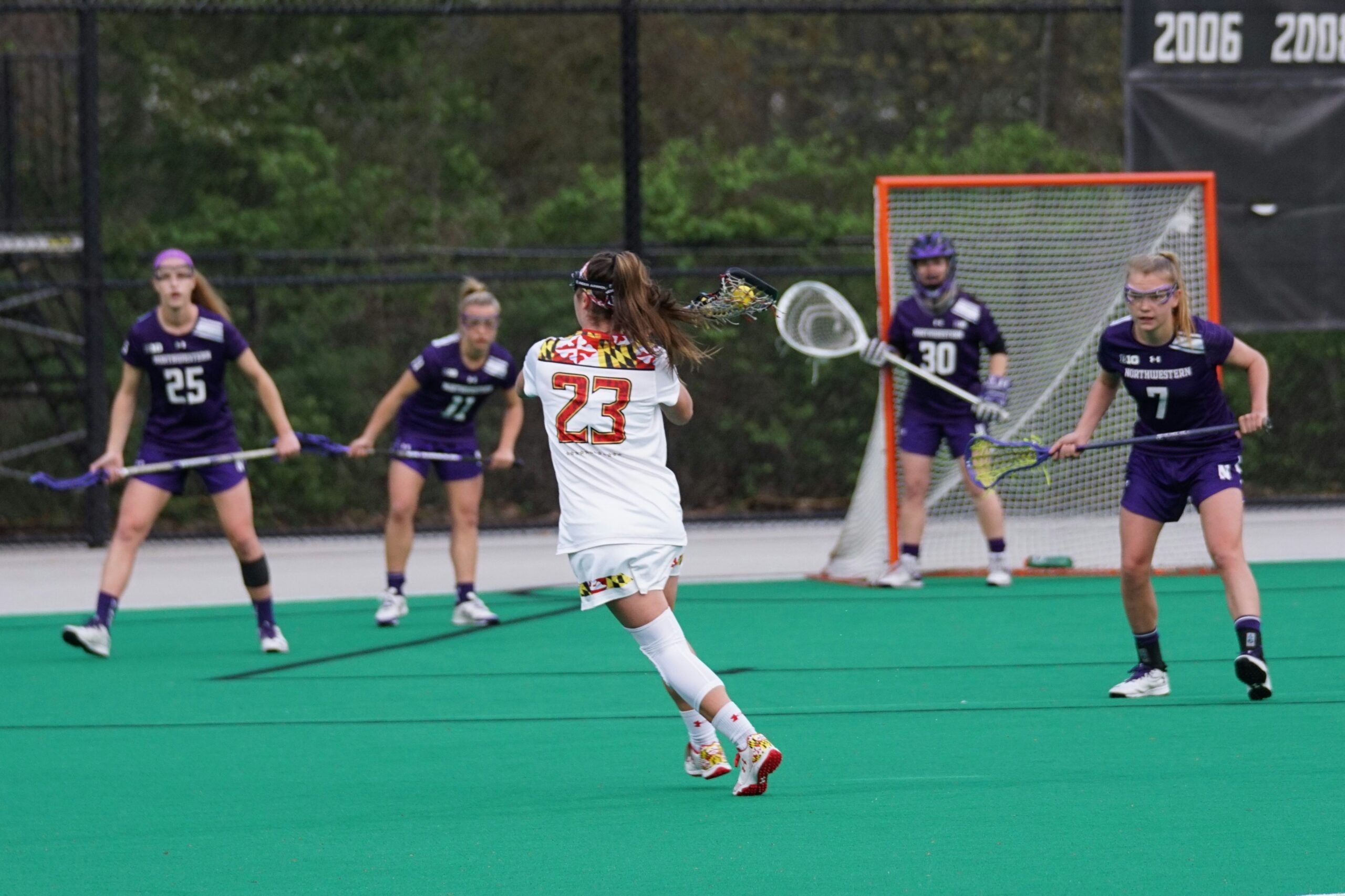Wing play in lacrosse often sets the tone for an entire possession. A quick burst off a faceoff, winning a ground ball in transition, or staying tight in defensive coverage can swing momentum in seconds. Wing players don’t always get the spotlight, but they often decide which team controls the pace.
The difference between good and great wing play usually comes down to footwork. Quick, efficient movement makes the game easier—whether you’re fighting for possession, cutting through traffic, or locking down an opponent.
This guide breaks down why footwork matters so much for wings, the movement patterns every player should master, conditioning methods to stay sharp all game, and drills to build explosive quickness.
Core Footwork Fundamentals for Wing Players
The foundation of wing play starts with body position. Without balance and control, speed doesn’t matter. Key fundamentals include:
- Athletic stance: Stay low, weight slightly forward on the balls of your feet, ready to move in any direction. This gives you faster reactions and stronger push-offs.
- First step: That initial move often determines success. Use short, explosive steps to get going quickly instead of long strides that take time to build up speed.
- Lateral movement: Shuffles keep you square to the play while covering ground. Avoid crossing your feet, which makes it easy to trip or lose balance.
- Backpedaling: When dropping into defense or creating space, keep steps short and body weight slightly forward. This keeps you ready to plant and drive forward again.
- Body control: Balance is what ties everything together. Strong core muscles and good deceleration technique allow you to cut sharply and change direction without losing speed.
Mastering these basics gives players a foundation to react quickly in every situation.
Common Footwork Moves in Lacrosse
Different moments in a game require different footwork. Wing players should be comfortable with several movement patterns:
Fast breaks: Sprinting at full speed is common for wings. The challenge is staying under control so you can adjust, dodge, or pass without breaking stride.
Cutting techniques: Good cuts are about changing direction sharply without losing momentum. Crossover steps help you turn while keeping balance, while open steps give you maximum acceleration when running straight.
Defensive movement: Playing defense on the wing requires quick reactions more than pure speed. The goal is to stay in front of your matchup—short recovery steps, balanced stance, and spacing that takes away cutting lanes without overcommitting.
Closing space: Approaching at the right angle matters. Use stutter steps to control your speed, stay balanced through contact, and avoid overrunning the play.
The best wing players move smoothly between offense and defense, adjusting footwork to match the situation.
Conditioning for Sustainable Quickness
Footwork isn’t just about technique—it’s also about the ability to stay explosive throughout the entire game. Conditioning for wing players should blend power, agility, and endurance.
Plyometrics:
- Box jumps train vertical power that translates to quicker first steps.
- Skater hops build lateral strength and agility for defensive coverage and cutting.
Single-leg bounds: These strengthen each leg independently, fixing imbalances and building power for sprinting and pushing off during direction changes.
Interval sprints: Short bursts of all-out effort followed by brief recovery mimic game demands far better than steady jogging.
Agility circuits: Combine shuffles, sprints, and backpedals with quick transitions to improve both footwork and conditioning at once.
Conditioning should focus on quality over quantity. Each rep should be explosive, with enough recovery to maintain intensity.
Drills to Build Speed and Quickness
Drills bring footwork concepts into real practice. A few that translate directly to game play include:
Cone zigzag drill: Place cones in a zigzag pattern (about 5 yards apart). Sprint, plant, and cut hard at each cone, focusing on staying low and accelerating out of every change of direction.
Agility ladder work: Use patterns like “in-in-out-out” or lateral steps. These sharpen foot placement, coordination, and speed.
Faceoff wing starts: Begin crouched, then explode forward on a coach’s command. Add a ground ball pickup or direction change to make it game-like.
Sprint-shuffle-sprint combos: Run forward, transition into a lateral shuffle, then sprint again in another direction. This mirrors how wing players constantly switch between different movements in games.
Drills should always focus on sharp execution, not just speed.
Conclusion
Footwork is what makes wing players stand out. A quick first step, smooth cuts, and controlled movement under pressure lead to more possessions won, better transition play, and stronger defense. With consistent conditioning and smart drills, players can sharpen these skills and make a bigger impact on the field.
Want to take your wing play and footwork to the next level? Athletes Untapped connects players with private lacrosse coaches who build personalized training plans for speed, agility, and transition skills. Learn more at Athletes Untapped or explore lacrosse coaches near you.




